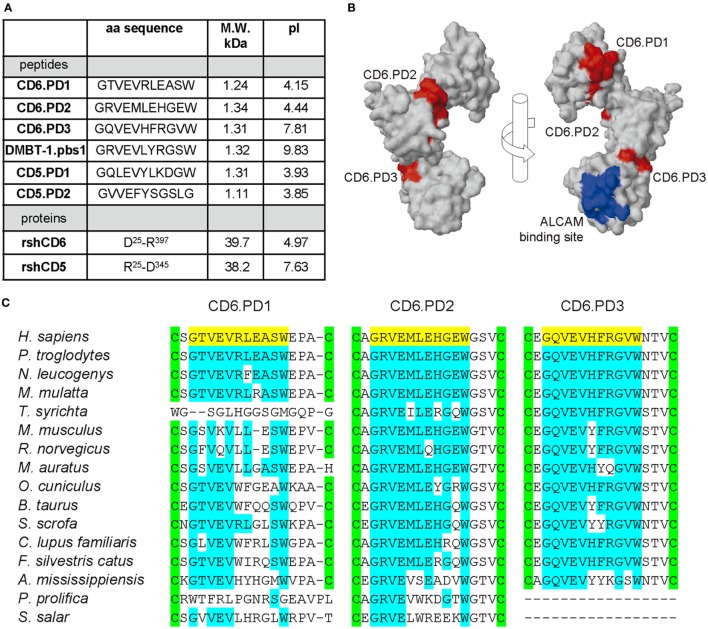Figure 1.
Structural characteristics of the peptides and proteins from the scavenger receptor cysteine-rich superfamily (SRCR-SF) members in the study. (A) Amino acid sequence, molecular weight (M.W.) and isoelectric point (pI) of the CD5, CD6, and deleted in malignant brain tumors-1 (DMBT-1) peptides and proteins analyzed in this study. (B) Three-dimensional surface representations of the extracellular region of human CD6 (PDB identifier 5a2e, visualized with Jmol) displaying the relative position of the CD6 peptides in the study (colored red) and amino acids involved in binding to the CD6 ligand, CD166/activated leukocyte cell adhesion molecule (ALCAM) (colored blue). (C) Alignment of the SRCR domain 1, 2, and 3 amino acid sequences of CD6 from primate (Homo sapiens, accession number P30203; Pan troglodytes, H2Q3T6; Nomascus leucogenys, G1RTX7; Macaca mulatta, H9ZFC2; and Tarsius syrichta, A0A1U7SL56) rodent (Mus musculus, Q61003; Rattus norvegicus, Q812A4; and Mesocricetus auratus, A0A1U8BJ49), lagomorph (Oryctolagus cuniculus, G1T3D3), artiodactyl (Bos taurus, F1MU15; Sus scrofa, K7GS39), carnivoran (Canis lupus familiaris, F1PV91; Felis silvestris catus, M3WJ99), crocodilian (Alligator mississippiensis, A0A151NXS4), and fish (Poeciliopsis prolifica, A0A0S7G288; Salmo salar, A0A1S3RVR2) species, where the peptides in study (colored yellow) map. Conserved intradomain cysteine residues and amino acid identities are highlighted in green and blue, respectively.

